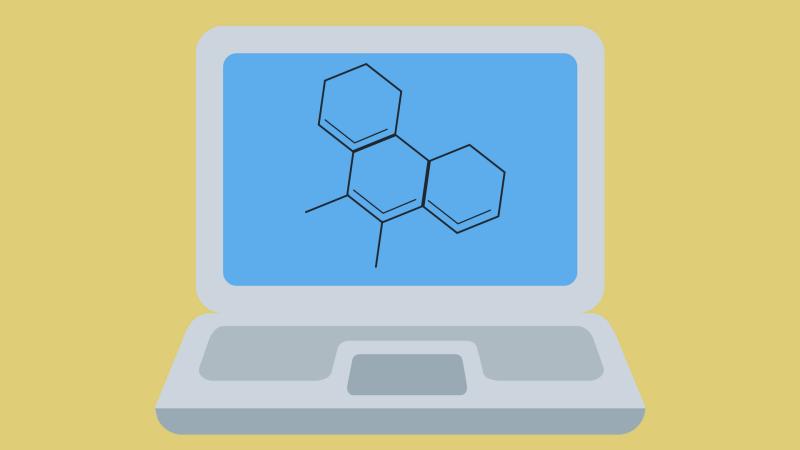
Every passing day we are exposed to a cocktail of chemicals through medicines, cosmetics, pesticides, aerosols, gaseous emissions, pollens, etc. Many of these affect our health; some are allergens, while others could be carcinogens or cause fatal diseases. Although some products are tested to ascertain their safety for human use, the process is tedious, time-consuming and involve testing on animals. In a study, researchers from the Indian Institute of Science Education and Research (IISER), Bhopal, have developed an alternative approach to test the toxicity of small molecules by using their chemical and physical properties.
The researchers of the study, published in the journal Frontiers in Pharmacology, have developed a web-based tool called ToxiM. It uses machine learning and informatics to predict the toxicity of a compound using its structural and molecular properties, and its solubility and permeability which affect its absorption within the cells, and hence its toxicity. The researchers believe that the tool would be handy to the scientific community to study the environmental and physiological toxicity of a molecule.
ToxiM works by studying specific features of various compounds, their molecular descriptors and fingerprints. Molecular descriptors of a compound depict the two and three-dimensional characteristics of a molecule in numerical value. Fingerprints are used to understand chemical and structural properties of the molecule, which help to assess the solubility of a molecule. In this study, the researchers focused on examining the permeability of various compounds on our epithelial cells to determine their toxicity.
The researchers trained their tool by feeding it with data of 2,849 previously studied toxins, which have been medically recorded as ‘toxic’ even in low concentrations. They also supplied data of human metabolites that are produced in our body and are non-toxic to us. They also provided data of 41 commercially banned drugs determined to be toxic and 15 compounds commonly found in beauty products, detergents and used as food additives and preservatives. Using these datasets, they constructed three training models and performed statistical analysis to determine relationships among them.
The researchers tested ToxiM by feeding it with a validation dataset where the toxicity values predicted by the tool were verified against their known or previously reported values. The results show that the tool predicted accurately for almost all the compounds except for a few discrepancies. It classified common chemicals such as food additives like aspartame and saccharin used in sweeteners, pesticides like EDTA (Ethylenediaminetetraacetic acid) and DCPA (Dimethyl tetrachloroterephthalate) and few chemicals used in beauty products as toxic. Some compounds, whose uses are debatable, such as imidazolidinyl urea used in cosmetics and sodium hypochlorite or bleaching powder, produced mixed results through different models in ToxiM.
Talking about the precision of ToxiM, the researchers mention, “the reported accuracies in assigning a molecule as toxic or non-toxic, and the values that predict the aqueous solubility and permeability attest the performance of the tool. The models developed for ToxiM also produced a higher performance compared to some other online tools”.
ToxiM is a tool intended to be used by scientists, especially those studying toxic molecules. The platform is user-friendly, and a tutorial for navigation through the website is also available. The user is required to submit a query molecule through a Spatial Data File (SDF) or a similar format and may select one of the optimised models for prediction. The authors suggest that “the user should examine the query molecule using all the models available at the web server for comprehensive results”. In the future, the applicability of the tool may be improved by including other properties such as compositional, concentration, target organism and system, and any other factor that leads to physiological toxicity.





